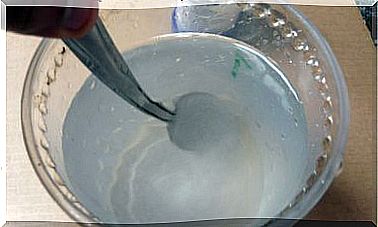Causes And Symptoms Of Brain Abscess
A brain abscess is a suppurative infection, a collection of purulent material in the cerebral hemispheres that behaves clinically like a cranial mass. According to the University of Navarra Clinic (CUN) , it is a medical emergency that requires hospital admission until stabilization and treatment.
Due to the fact that the mortality rate of this pathology has reached up to 50% in the past, it is necessary to know it thoroughly and to know how to detect the symptoms. In any infectious process, every second is valuable. Therefore, here we show you the causes and symptoms of brain abscess.
What is brain abscess?
As we have said previously, it is a focal intracerebral infection, which begins with cerebritis (local inflammation of the blood vessels of the brain, accumulation of fluid and necrosis), and then gives rise to a well-vascularized encapsulated anomalous area.
A study by the Cuban Journal of Neurology and Neurosurgery collects epidemiological data about this pathology. Some of them are the following:
- This type of abscess occurs between 0.3 – 1.3 inhabitants per 100,000 people per year (1,500 to 2,500 cases per year throughout the West).
- Most cases occur in the first two decades of the patient’s age. In addition, it affects men up to three times more.
- Due to its infectious origin, it is more common in low-income countries, where sanitation, medical facilities and literacy are poor.
- The death rate has decreased from 50% to 20% in recent times, as sophisticated detection methods, such as computed tomography, have been developed.
As we can see, brain abscess is a rare disease in industrialized countries. Still, it never hurts to have information about any disease, no matter how strange, to be able to act quickly. Next, we show you its causes and symptoms.

Main causes
We have to bear in mind that, like any other infection, this disease is caused by the entry of pathogens into the body. Studies distinguish between three different means of arrival of germs to the brain. These are as follows:
- Hematogenous spread – Bacteria enter the bloodstream and reach the brain from a distant infectious focus. It responds to 25% of the cases, approximately.
- Infection by contiguity: it occurs in cases in which an infection occurs in a place close to the brain area, such as the ear or paranasal sinuses. It should be noted that more than 35% of brain abscesses are the result of otorhinogenic sepsis, that is, an uncontrolled ear infection that has spread.
- Direct entry infection: when a serious injury occurs that exposes brain material or after poorly managed neurosurgical intervention. In these cases, the bacteria come into direct contact with the brain, which facilitates their colonization. This method of infection is the least common, as it is not the cause of even 20% of cases.
As we have seen, ear and sinus infections are some of the most common causes of abscesses. Even so, distant infectious foci such as lung abscesses, osteomyelitis (infection of the bones), pelvic and intra-abdominal infections can also lead to a brain abscess.
It should be noted that, according to studies, bacteria of the genus Streptococcus are the cause of more than 70% of brain abscesses. Other bacterial strains of the genera E. coli, Klebsiella spp, Proteus, Enterobacter spp, and Pseudomonas have also been isolated from 23-33% of patients.
Symptoms of brain abscesses
Sources cited above collect the clinical picture of a brain abscess. Here we list some symptoms:
- Headache, headache. It is the most common symptom, as it occurs in more than 70% of cases.
- Stiff neck.
- Fever, present in up to 30% of cases.
- Nausea and vomiting
- When the frontal lobe is affected, it results in attention deficit, lethargy, drowsiness, and speech disorders.
It is necessary to point out that the rupture of the abscess in the brain area (remember that it is a purulent formation surrounded by a vascularized capsule) is associated with a mortality of 85%. Even so, of the patients who manage to recover, 20 to 75% may suffer neurological sequelae.

In speed is the key
As in any other infectious process, detecting it early is the key to success. In these cases, the diagnostic method is based on computed tomography (CT) exploration, followed by a biopsy (obtaining a sample) for the exact identification of the microorganism causing the pathology.
According to studies, the majority of patients with brain abscesses (66%) have to undergo surgical procedures. Furthermore, these procedures do not ensure a positive prognosis, since almost up to half of the cases can become complicated after treatment and even cause the death of the patient.
What to remember about brain abscess?
As we have seen, brain abscesses respond to an infectious process that is usually located in the ear or paranasal sinuses. The infection becomes complicated and causes the formation of a purulent mass in the skull.
However, it must be considered that it can be avoided if infectious processes are taken seriously. Therefore, before any manifestation of this type of disease, it is essential to seek medical attention.









